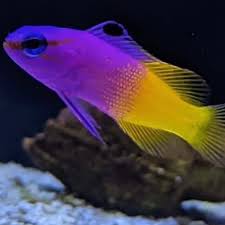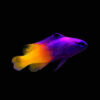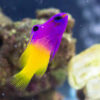Dragons in Rituals of Worshiping Deities in Chinese Beliefs

In Chinese culture, the dragon is one of the most revered and influential symbols, often depicted as a powerful, divine being that connects the human world with the celestial realm. Throughout centuries, the dragon has played a crucial role in Chinese religious rituals and beliefs, particularly in the veneration of gods and deities in both folk religion and state-sponsored religious practices. The connection between the dragon and deities in Chinese tradition is not only a reflection of the creature’s cosmic power but also an important spiritual and ritualistic symbol.
This article explores the various aspects of the dragon’s role in the worship of gods and deities in Chinese religion, focusing on its deep symbolism, association with key divine figures, and the significant role it plays in various religious and spiritual practices across China.
The Role of the Dragon in Chinese Religion
The dragon holds a unique position in Chinese religion, where it is often seen as a mediator between the earthly realm and the celestial domain. In Chinese mythology, the dragon is typically depicted as a creature of immense power and wisdom, capable of controlling the elements such as water, rain, and storms. This ability to influence nature positions the dragon as a spiritual entity capable of communicating with the heavens and guiding the forces of nature in ways that sustain life on earth.
In the context of worshiping deities, the dragon is often associated with major gods and immortal beings, serving both as a symbol of divine power and as a vehicle through which devotees seek favor or blessings from the divine. Dragons are commonly found in various temples, altars, and shrines dedicated to gods, where they are considered important symbols of the divine and revered figures in Chinese culture.
The Dragon as a Divine Messenger and Protector
In Chinese beliefs, dragons are often seen as messengers of the gods, carrying divine commands or blessings from the higher realms to the mortal world. In many rituals, dragons symbolize the connection between human beings and the deities, acting as intermediaries that help bring harmony and prosperity to the worshippers.
One of the most significant deities associated with dragons is Longwang, the Dragon King, who governs the seas and waters in Chinese folklore. As the protector of water, Longwang plays an essential role in agricultural society, where access to water is crucial for successful harvests. Worshipping Longwang often involves invoking the dragon’s power to ensure adequate rainfall and to protect people from natural disasters like floods.
The worship of Longwang takes place in various water-related rituals, especially in coastal areas where water management and flood control are of primary concern. In these ceremonies, dragons are either physically represented through dragon-shaped statues or depicted in murals and paintings within temples and shrines. Through these representations, the faithful appeal to Longwang for protection against disasters, as well as for bountiful harvests.
The Dragon and the Jade Emperor
Another important figure in Chinese religious practices, the Jade Emperor, also has a close association with dragons. The Jade Emperor is regarded as the supreme deity in Taoist cosmology and is believed to rule over all realms, including heaven, earth, and the underworld. In Taoist temples and rituals, the Jade Emperor is often depicted seated on a throne, with dragons surrounding him as symbols of his immense power and authority.
During religious celebrations such as the Jade Emperor’s Birthday, which falls on the ninth day of the first lunar month, dragons are prominent figures in the rituals and processions that seek to honor and invoke the Emperor’s blessings. These celebrations often feature dragon dances, where performers dressed in elaborate dragon costumes symbolize the power and majesty of the Jade Emperor, connecting the physical world with the divine authority he wields.
The dragon, in this context, serves as a divine servant to the Jade Emperor, illustrating its role as a spiritual figure that aligns itself with celestial authority. The ritual significance of dragons in these practices highlights their role in safeguarding the balance of the cosmos and maintaining harmony between heaven and earth.
The Dragon in Ancestor Worship and Deity Cults
In addition to deities like Longwang and the Jade Emperor, dragons are also present in the rituals of ancestor worship, which are an integral part of Chinese spiritual practices. Ancestor worship is based on the belief that the spirits of deceased family members continue to exert influence over the lives of their descendants, and that honoring these spirits can ensure the wellbeing and prosperity of future generations.
Dragons are often included in the rituals conducted to honor the spirits of the ancestors, especially in regions where imperial symbolism is heavily intertwined with the worship of ancestors. The dragon symbolizes the ancestors’ connection to the divine and their ability to intercede on behalf of their descendants. In some regions, it is believed that the dragon spirit can help the deceased ancestors achieve higher spiritual levels and protect their descendants from harm.
The dragon’s appearance in ancestor worship ceremonies typically takes the form of carvings or embroidered images that accompany altars and offerings. These dragons symbolize the protection of the family’s lineage and the continuity of the ancestral spirit in the family’s life. This practice is particularly significant in Taoist temples and in the rituals associated with ancestor altars, where the dragon is worshipped as both a symbol of divine intervention and the spiritual continuation of the family’s heritage.
Dragon and the Five Elements (Wu Xing) in Rituals
The five elements (Wu Xing), consisting of wood, fire, earth, metal, and water, are fundamental concepts in Chinese cosmology and are frequently integrated into Taoist rituals. According to Chinese belief, dragons are especially linked to the water element, which symbolizes flow, abundance, and renewal. As such, dragons are seen as powerful agents of water control, rainmaking, and the regulation of water cycles.
In Taoist rituals, especially those aimed at invoking divine protection or blessings for crops, the dragon is often called upon to represent the water element and to maintain the balance of the five elements in the cosmos. This elemental worship involves not only offerings and incense burning but also the use of dragon imagery in rituals to maintain harmony between the earthly and celestial realms. For example, during the Qingming Festival, which honors ancestors and spirits of the deceased, dragons are invoked in rituals that seek to ensure prosperity, balance the elements, and secure peace and protection for the family.
The dragon’s elemental connection highlights its role in Taoist religious practices, where it is not just a spiritual entity, but an integral part of the cosmic order that governs natural forces.
Dragon Worship in Folk Religion
In Chinese folk religion, dragons are often central figures in the worship of local deities, spirits, and natural forces. These deities and spirits are believed to hold influence over various aspects of everyday life, including health, fertility, and good fortune. Folk traditions across China feature dragons as deities that ensure the wellbeing of the community by offering protection from calamities and bestowing good fortune.
One example is the Dragon Boat Festival, an important cultural and religious celebration held on the 5th day of the 5th month of the lunar calendar. During this festival, dragon boats are raced in honor of the dragon deity, and rituals are performed to ensure that the community is protected from evil spirits and misfortune. The dragon boat itself, a powerful symbol of the dragon’s energy, is seen as a vehicle for divine protection, as the ritualistic rowing of the boat is believed to chase away harmful influences and summon the blessings of the dragon.
Additionally, the dragon plays a crucial role in the worship of local gods and spirits in rural areas, where it is often invoked to bless families and communities. These rituals typically involve the offering of food, incense, and prayers at dragon shrines or temples, where the faithful seek the dragon’s favor in matters such as fertility, prosperity, and protection.
Conclusion: The Enduring Power of the Dragon in Chinese Rituals
The dragon’s role in Chinese religious rituals remains an essential element in the veneration of deities, local spirits, and ancestors. As a divine figure representing cosmic power and spiritual authority, the dragon is integral to the maintenance of balance between heaven and earth. Its connection to key figures such as Longwang, the Jade Emperor, and ancestors reflects the multifaceted nature of the dragon in Chinese beliefs, where it serves as both a protector and a divine messenger.
The rituals surrounding the dragon reveal its enduring power in Chinese culture, not only as a symbol of imperial authority and good fortune but also as a spiritual agent capable of connecting the mortal and divine worlds. As these ancient rituals continue to be practiced today, the dragon remains a living symbol of protection, harmony, and prosperity—deeply embedded in the spiritual and cultural fabric of China.


